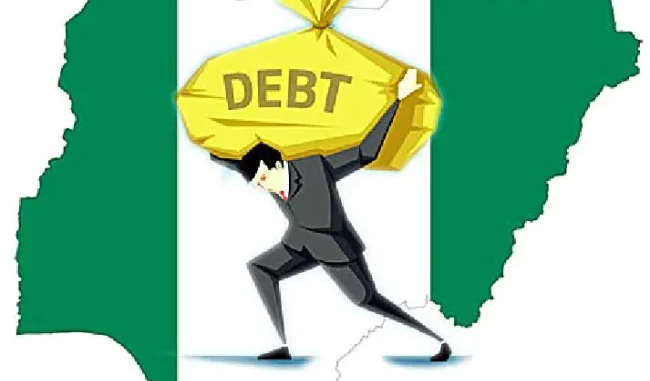
Nigeria’s total public debt burden has surged to N152.40 trillion as of June 30, 2025, marking yet another sharp rise under President Bola Tinubu’s administration, according to fresh data released by the Debt Management Office (DMO) on Saturday.
The new figure represents a N3.01 trillion increase from N149.39 trillion recorded at the end of March 2025 — a 2.01 percent rise in just three months.
In dollar terms, the country’s debt jumped from $97.24 billion to $99.66 billion, reflecting a 2.49 percent increase.
The DMO report lays bare the Tinubu government’s escalating dependence on both domestic and foreign borrowing to cover ballooning fiscal deficits, despite promises of sweeping reforms in revenue collection and foreign exchange management.
A closer look at the numbers shows that Nigeria’s external debt rose to $46.98 billion (N71.85 trillion) by June, up from $45.98 billion (N70.63 trillion) in March — signalling sustained borrowing from multilateral institutions like the World Bank and other foreign creditors.
“The World Bank remained Nigeria’s single largest external creditor, with $18.04bn outstanding, mostly through the International Development Association. This represents about 38 per cent of total external obligations.
“Overall, multilateral lenders accounted for $23.19bn or 49.4 per cent of the external portfolio. Other multilateral partners include the African Development Bank, the International Monetary Fund, and the Islamic Development Bank.
“Bilateral loans contributed $6.20bn, led by the Export-Import Bank of China with $4.91bn, while smaller exposures were owed to France, Japan, India, and Germany.
“Commercial borrowings, mostly Eurobonds, stood at $17.32bn, accounting for 36.9 per cent of the external debt. Nigeria also owed $268.9 million under syndicated facilities and commercial bank loans.”
The country’s heavy exposure to Eurobonds could heighten its vulnerability to global market shocks, while dependence on concessional multilateral loans points to persistent fiscal fragility and limited access to cheaper credit.
On the domestic front, total debt rose to N80.55tn in June, up from N78.76tn in March, an increase of N1.79tn or 2.27 per cent.
The portfolio was dominated by Federal Government bonds, which stood at N60.65tn accounting for 79.2 per cent of the total domestic debt. This includes, N36.52tn in naira-denominated bonds, N22.72tn in securitised Ways and Means advances from the Central Bank of Nigeria and N1.40tn in dollar bonds.
Other components included Treasury bills worth N12.76tn (16.7 per cent), Sukuk bonds valued at N1.29tn savings bonds of N91.53bn, green bonds of N62.36bn, and promissory notes totalling N1.73tn.
The securitisation of CBN’s Ways and Means lending, essentially converting overdrafts into long-term debt, highlights the fiscal pressures facing the Tinubu administration, even as it seeks to tighten monetary discipline and restore investor confidence.
According to the DMO, “the Federal Government accounted for N141.08tn, or 92.6 per cent of the total public debt stock. This includes N64.49tn in external obligations and N76.59tn in domestic liabilities.
“Subnational governments, comprising the 36 states and the Federal Capital Territory, owed a combined N11.32tn representing 7.4 per cent of total public debt. Of this, $4.81bn (N7.36tn) was external, while N3.96tn was domestic.”
Nigeria’s rising debt comes amid ongoing efforts by the Federal Government to boost non-oil revenues, curb inflation, and stabilise the naira under its economic reform agenda.
While the DMO insists that the debt remains within sustainable limits, concerns persist over the cost of borrowing, and exchange rate adjustments.
Leave a Reply